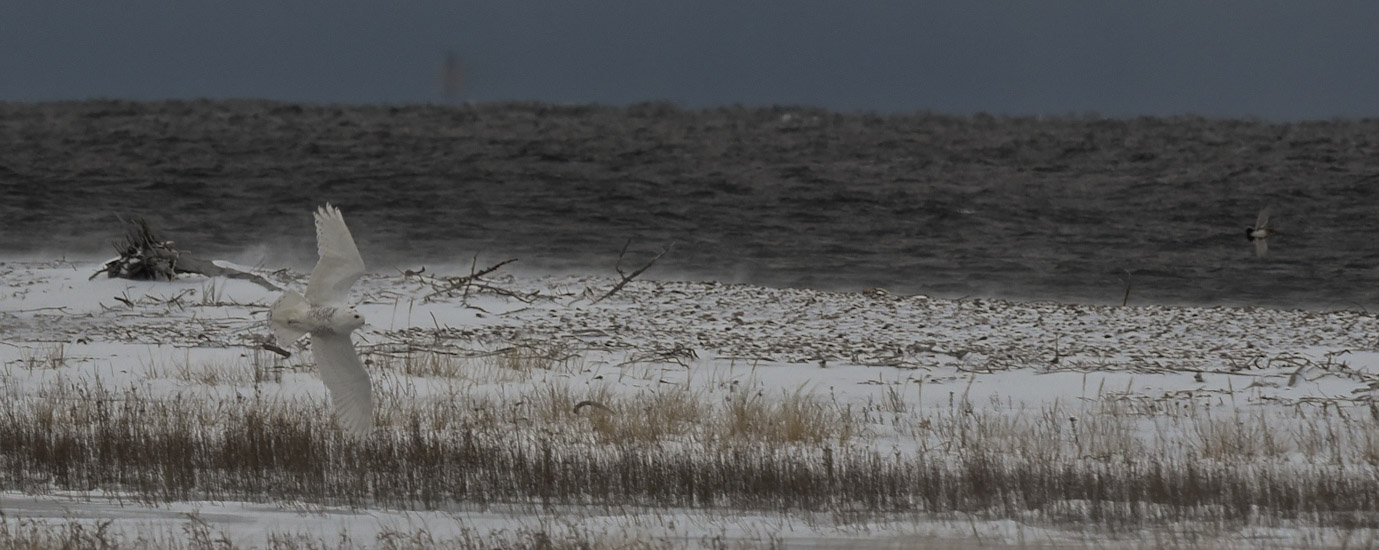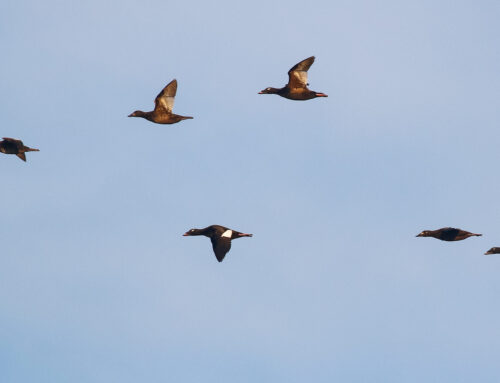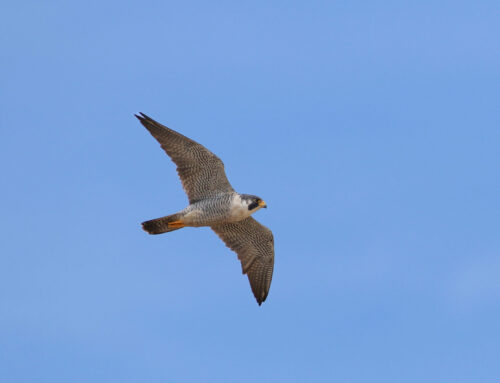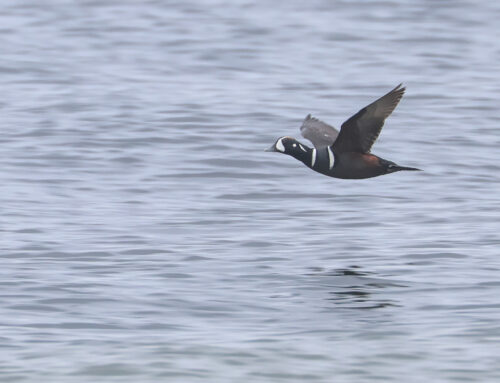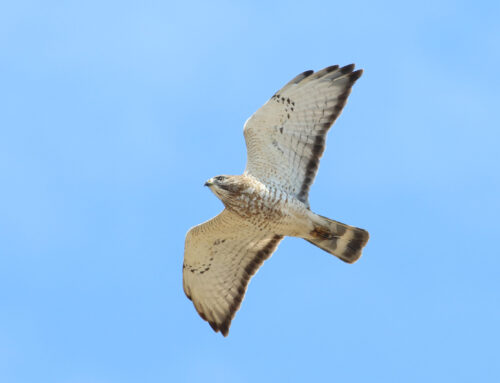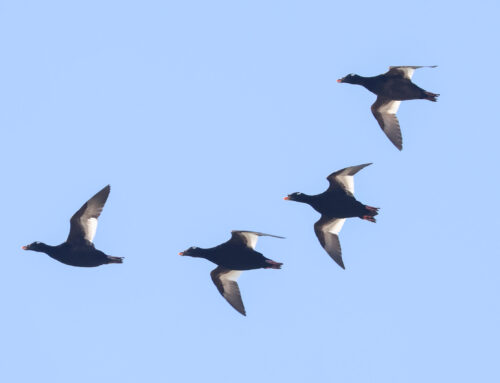Most hours of most days, the little flock of Snow Buntings are the closest thing to company out at the waterbird shack. They’re pretty good for that, actually–hardy birds that flit about the frozen beach, gleaning the sparse grass, giving happy calls even when the snow is so profuse I can’t see the lake. Watching the buntings inspires me to take a page from their book–to be of good cheer in the face of winter, which came early this year.
Last Saturday, it started to snow. That’s a week ago now, and it hasn’t really stopped. Snow Buntings, snow squalls, snowflakes–I even saw, in a snowstorm on November 3, a waterspout. But…
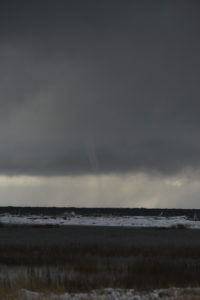
Waterspout photographed on 3 November at the Point. Alison Vilag photo.
“Have you seen any Snowies lately?” he asked. They were rare visitors, in the sense they were visitors. But beyond that, this group brought with them a definite flair that was an unusual, welcome energy out on the point. Three of them were Colombian, and all four were salt of the earth, with ready laughs, untempered curiosity, and a deep thoughtfulness for our work, the birds, for me. Their appreciation for Superior—and for winter–revived my own. A good thing on a long, cold, blustery day. I liked them immediately.
I hadn’t seen any Snowies, though. Neither had anyone else. So far, it just hasn’t been a big season for that species. Per eBird, there haven’t been any in the Midwest yet this autumn. Two of the party, Deisy and Guillo, were returning to Colombia in a few days. I did not think that a Snowy Owl was in our forecast, but I wished there could be.
After some time, they left, to drive around and warm up. They told me they would be back, but I was not expecting them to. Most, upon leaving the Point, find no appeal in reinserting themselves back into the winter harshness, and I do not hold that against them. Even for me, it has been a mental battle most days this week. If I can make it to the halfway point in the count before admitting I’m cold, I count it a great victory.
But it was well past the halfway point. The count was in its last hour, and I was blatantly, unashamedly, cold. Heat distortion was so severe that putting a number on the unending Long-tailed Duck strands twisting through the shimmer was making me almost dizzy. I was surprised, then, when some movement behind me caught my eye, to see the Colombians and Co. nearing the end of the boardwalk. But before I could acknowledge them, I caught something else in front of me, way out over the lake. The way it was flying towards shore–readjusting its course every time the wind pushed it too far south–made me think it was not just another Herring Gull.
It was so distant, and the mirage so bad, that I wasn’t sure of anything. It seemed to float more than fly, but it was headed our way. It seemed awfully pale, a ghostly apparation emerging from the haze. I watched it transform–from mirage to large raptor to something I almost couldn’t believe. I waved wildly to my visitors, who rushed over so we all could stand on the frozen beach, completely absorbed in the Snowy Owl coming in off the lake. It landed and hunkered out of the wind just long enough for us all to satiate ourselves with scope views, took a pass at a Horned Lark, then lifted off again over the bay, headed towards the Soo. We stood there after it left, united in elation and wonder at its journey. I was overjoyed that we all had shared this experience, a little weak in the knees–and, miracles, I wasn’t cold anymore.
Though migration is winding down, markedly, it’s been another great week at the waterbird count. Noteworthy sightings include peak Bufflehead movement (1,307 on 5 November), a Glaucous Gull on 8 November, 3,543 Long-tailed Ducks on 7 November, and 27 Tundra Swans on 3 November.
Thank you for reading!
-Alison Vilag, WPBO Waterbird Counter
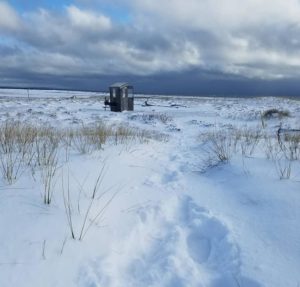
Winter came early to the Point! Alison Vilag photo.

